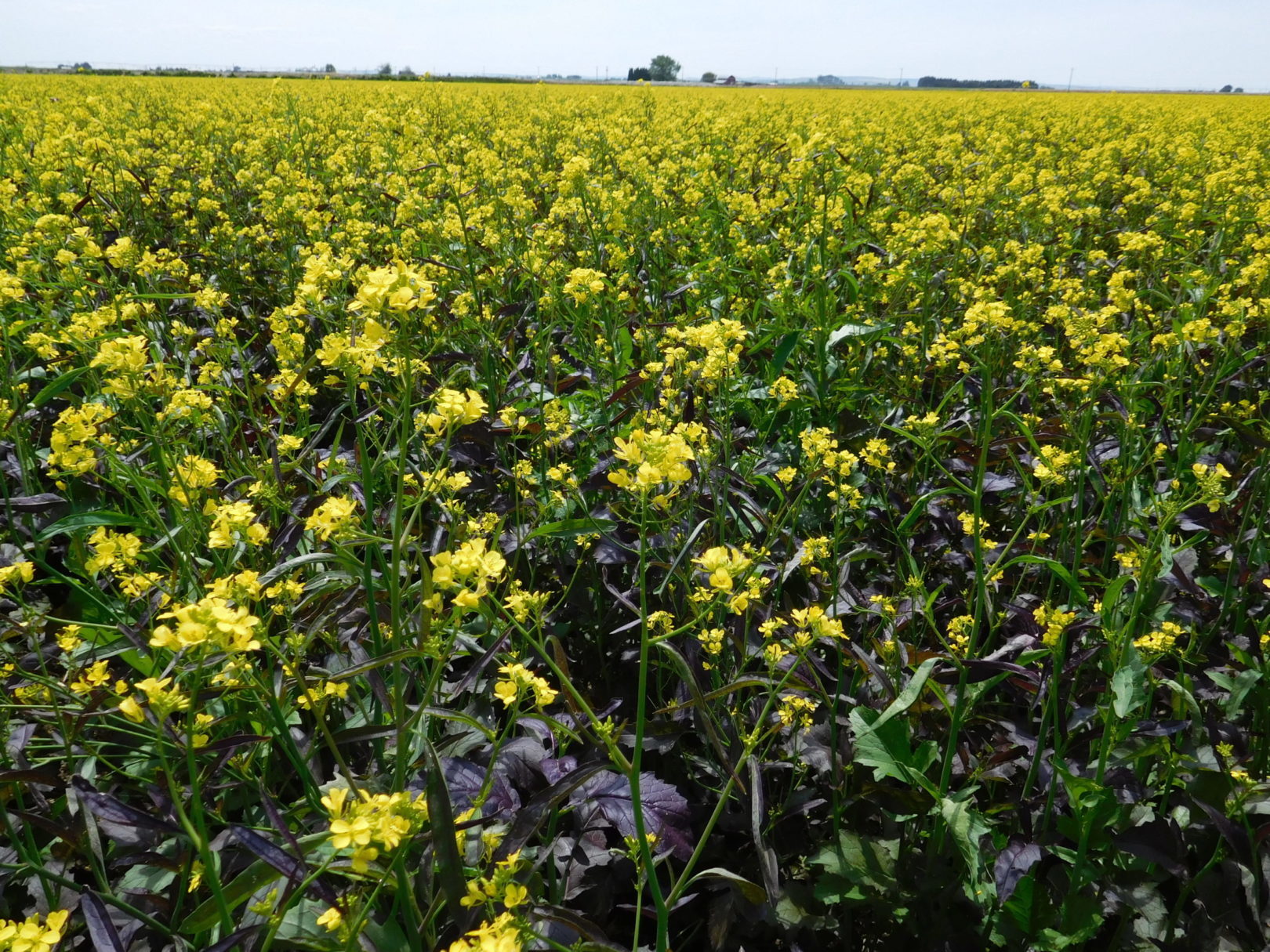
Biofumigation is so much more than a green manure
How to get the best results from Biofumigation.
What is biofumigation?
All brassicas contain organic compounds called glucosinolates to a varying degree. In the right conditions some of these glucosinolates produce active compounds which are useful in the suppression of pathogens and weeds. The incorporation of these active compounds into the soil is the process of biofumigation. There are also other benefits from the process as we shall see later.
The science of biofumigation:
Brassicas contain three key ingredients; glucosinolates, an enzyme called myrosinase and water. The cells of the plant store glucosinolates and myrosinase separately. They only meet when the cells of the plant are damaged. When water (from the plant itself or from the soil) mixes with them, it forms glucose and a secondary compound. The secondary compound breaks down further into volatile compounds including isothiocyanates (ITCs).
The isothiocyanates are toxic, volatile compounds which can be used to suppress pathogens and weeds. (Metam Sodium is a synthetic form of ITCs which is no longer available).
When herbivorous insects eat the plants this causes the natural occurrence of ITCs. In fact the plants use the mechanism as a defence to being nibbled.
Mechanising the process of cutting and bruising the plants by using a flail and a rotavator will enhance the chemical reaction.
Biofumigation using a cover crop:
Growing a brassica as a cover crop is the best way to use biofumigation. Not only do you produce the ITCs which will suppress the pathogens and weeds, but also you add a vast amount of organic matter which enhances the content of the beneficial microbes in the soil which in turn will be a good defence against pathogens. Also it helps capture nutrients and as brassicas have deep roots they help with drainage.
Although most of the ITCs are produced from the process of damaging the plants, there is also some natural secretion of glucosinolates from the roots. Microbes break down these compounds as they want to obtain the glucose and in turn this which will produce ITCs.
How to optimize Biofumigation
Two Main aims:
- Maximise the glucosinolate concentration
- Maximise the biomass (volume of material)
- 10 tonnes of dry matter per ha
- 50 tonnes of fresh matter per ha
Implementing crop management will help achieve these aims. Careful timing of the steps will obtain the best results so it is useful to understand the crop requirements as this will assist in decision making.
Steps:
1. Choose the most appropriate species.
- The most consistent brassica is Indian Mustard (Brassica juncea – our best variety is Caliente Rojo)
- Rocket can be used but this will not produce enough biomass
- White mustard (Brassica alba) doesn’t produce ITCs
2. Site selection:
- pH of the soil effects ITC production. It must be over pH 5
- a high organic matter content in the soil could result in the ITCs binding to this rather than being released into the soil.
3. Sowing Dates:
- Early as possible – June/July (if outside)
- Long day length, high UV and warmth will produce highest biomass and higher quantity of glucosinolates
4. Nutrients:
- To obtain a high glucosinolate content we recommend the application of Sulphur at 25kg/ha
- To obtain a high biomass we recommend the application of Nitrogen at 100kg/ha
5. Cutting
- Average growing time is 10-14 weeks
- Cut at the early flowering stage to maximise the glucosinolate content. Once there is 50% flowering the glucosinolate content reduces.
- Soil temperature needs to be above 8°C for compounds to work
- Soil must not be dry – either time cutting with rain or irrigate.
- Incorporate chopped material immediately. This is because the volatile compounds are lost within the first 5 hours. The best way to do this is with a front mounted flail and back mounted rotivator.
6. Sowing Cash Crop
- Biofumigation will take place within 24-48 hours
- Wait between 10-14 days before planting into the soil, as other gases are released.
- Do a Cress Test to make sure that all chemical reactions have finished.
- Take some soil and put it in a jar
- Cover with a damp paper towel
- Sprinkle with Cress seeds
- Germination should happen in 2-3 days. If this doesn’t happen wait a few more days before planting cash crop.
Benefits of using Biofumigation
- Suppresses pathogens such as PCN (Potato Cyst Nematode), wilts in aubergine, peppers and strawberries
- Also suppresses weeds
- Enhances the soil structure and the microbiome of the soil by incorporating a large amount of organic matter. Studies at SASA have shown that there may some short term detrimental effects to the microflora in the soil but this bounced back quickly due to the increase in organic matter.
More discussion is available from Alec Roberts (Tozer Seeds Account Manager) and Dr Matthew Back (Harper Adams University) on the Agroecology in Focus – Biofumigation Podcast